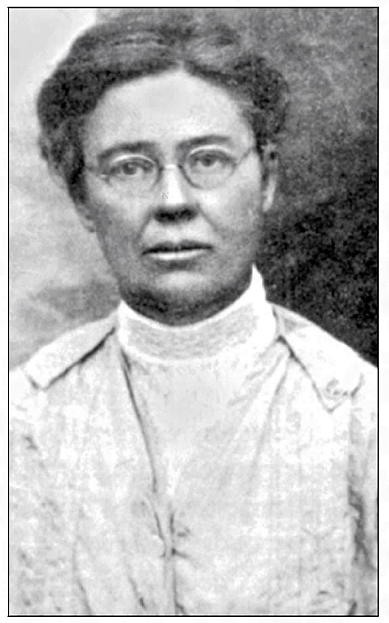The origin of white road lines
Road lines are of those things one tends to take for granted, but obviously someone had to first think of the idea, and credit for it is given to Dr. June McCarroll of Indio, CA.
As told by the LA Times (Oct 12, 2003):

There is some controversy, since two Michigan men (Kenneth Sawyer and Edward Hines) apparently had the same idea before McCaroll. And they even painted some white stripes on a road. But unlike her, they don't seem to have tried to get their state government to adopt the idea. So, I think McCarroll rightly gets credit as the originator of the idea.
As told by the LA Times (Oct 12, 2003):
In 1917, she was driving home at dusk after visiting a patient when a truck forced her off a narrow highway into the sand. It wasn’t the first time. The truck driver apparently had difficulty telling just where his half of the unmarked highway ended.
Later, while driving on another, newer highway, she noticed that the road had a definite middle joint where it had been widened from 8 feet to 16. The pronounced center ridge caused cars to stay on their own side. A center line painted down the middle would serve the same purpose, she decided.
Known for confidence and straight talk, she took her idea to the Riverside County Board of Supervisors and the Chamber of Commerce. They gave her a polite ear but nothing else.
She took direct action. She got down on her hands and knees and painted a 2-mile-long 4-inch-wide white stripe down the center of the road that passed in front of her house on Indio Boulevard.
She was sure that her example would illustrate the idea’s safety benefits, but change was slow to come. For seven years, she wrote letters and petitioned the county and state to adopt the white lines.
Finally, with the support of the Indio Women’s Club and the California Federation of Women’s Clubs — which had previously campaigned to add roadside markers and to preserve El Camino Real — she prevailed. In 1924, the Legislature authorized the State Highway Commission to paint center lines.
From Doc June’s idea sprang colors, stripes and other markings on streets and highways to enhance motoring safety. By the time she died in 1954, at 86, striping highways was commonplace across the country.
Later, while driving on another, newer highway, she noticed that the road had a definite middle joint where it had been widened from 8 feet to 16. The pronounced center ridge caused cars to stay on their own side. A center line painted down the middle would serve the same purpose, she decided.
Known for confidence and straight talk, she took her idea to the Riverside County Board of Supervisors and the Chamber of Commerce. They gave her a polite ear but nothing else.
She took direct action. She got down on her hands and knees and painted a 2-mile-long 4-inch-wide white stripe down the center of the road that passed in front of her house on Indio Boulevard.
She was sure that her example would illustrate the idea’s safety benefits, but change was slow to come. For seven years, she wrote letters and petitioned the county and state to adopt the white lines.
Finally, with the support of the Indio Women’s Club and the California Federation of Women’s Clubs — which had previously campaigned to add roadside markers and to preserve El Camino Real — she prevailed. In 1924, the Legislature authorized the State Highway Commission to paint center lines.
From Doc June’s idea sprang colors, stripes and other markings on streets and highways to enhance motoring safety. By the time she died in 1954, at 86, striping highways was commonplace across the country.

Dr. June McCarroll
There is some controversy, since two Michigan men (Kenneth Sawyer and Edward Hines) apparently had the same idea before McCaroll. And they even painted some white stripes on a road. But unlike her, they don't seem to have tried to get their state government to adopt the idea. So, I think McCarroll rightly gets credit as the originator of the idea.
Comments
I salute, applaud, and thank Dr. McCarroll. Hers was a good idea that we should not take for granted.
Posted by Patrick on 06/19/19 at 07:56 AM
Since then, the standard has changed so that white lines separate traffic going in the same direction, and yellow lines separate traffic going in opposite directions.
Posted by Joshua Zev Levin, Ph.D. on 06/19/19 at 08:00 AM
When the reflector markers for lane separation appeared in California in the 1960's, I thought that was a great development that reinforced the white - yellow line markings.
And Joshua, to expand on your observation of the white lane markings, the white reflectors are colored red going in the wrong direction on multi-lane roadways. I didn't know that until a number of years after I became eligible to drive.
And Joshua, to expand on your observation of the white lane markings, the white reflectors are colored red going in the wrong direction on multi-lane roadways. I didn't know that until a number of years after I became eligible to drive.
Posted by KDP on 06/19/19 at 09:37 AM
Commenting is not available in this channel entry.

Category: Highways, Roads, Streets and Traffic | 1910s